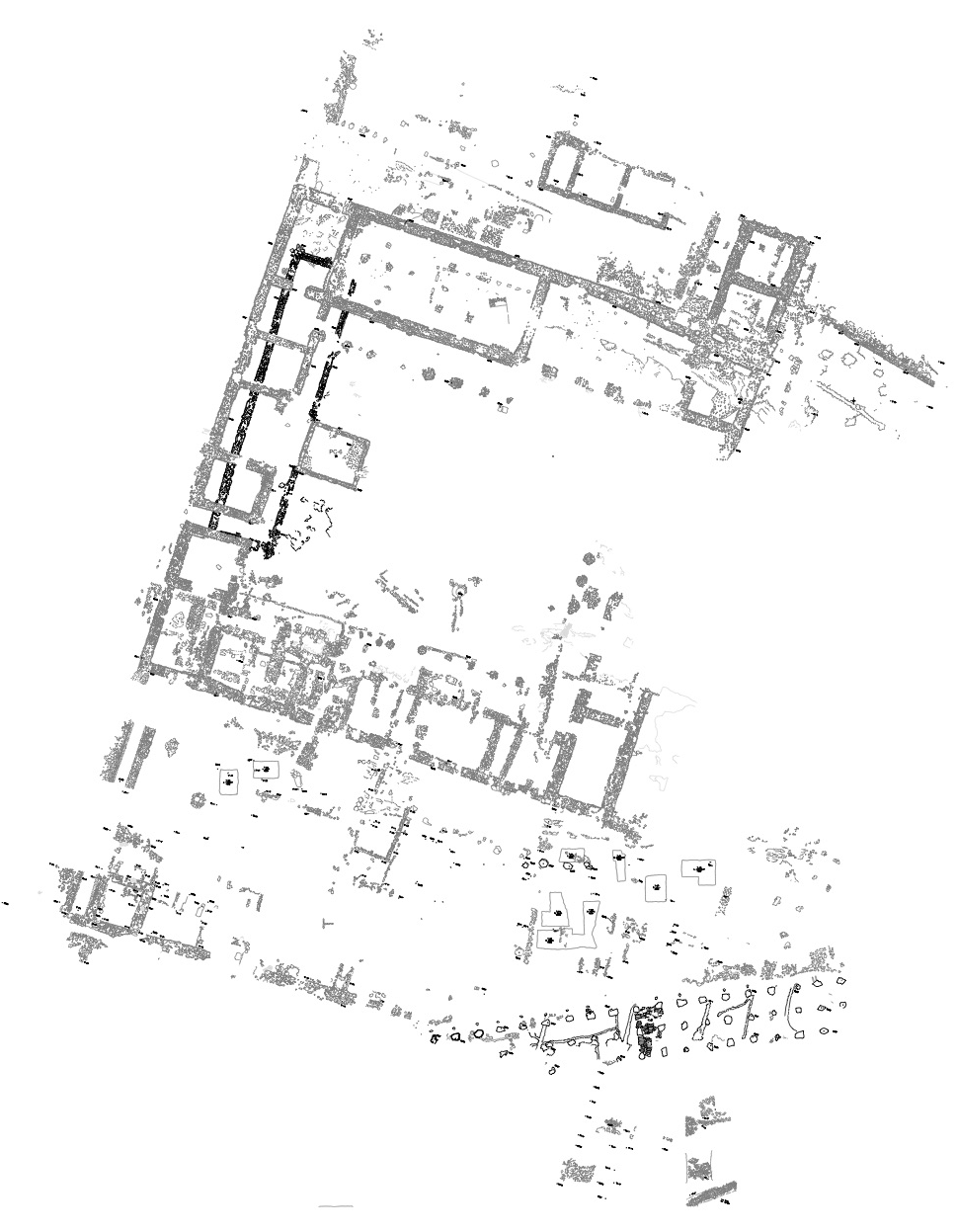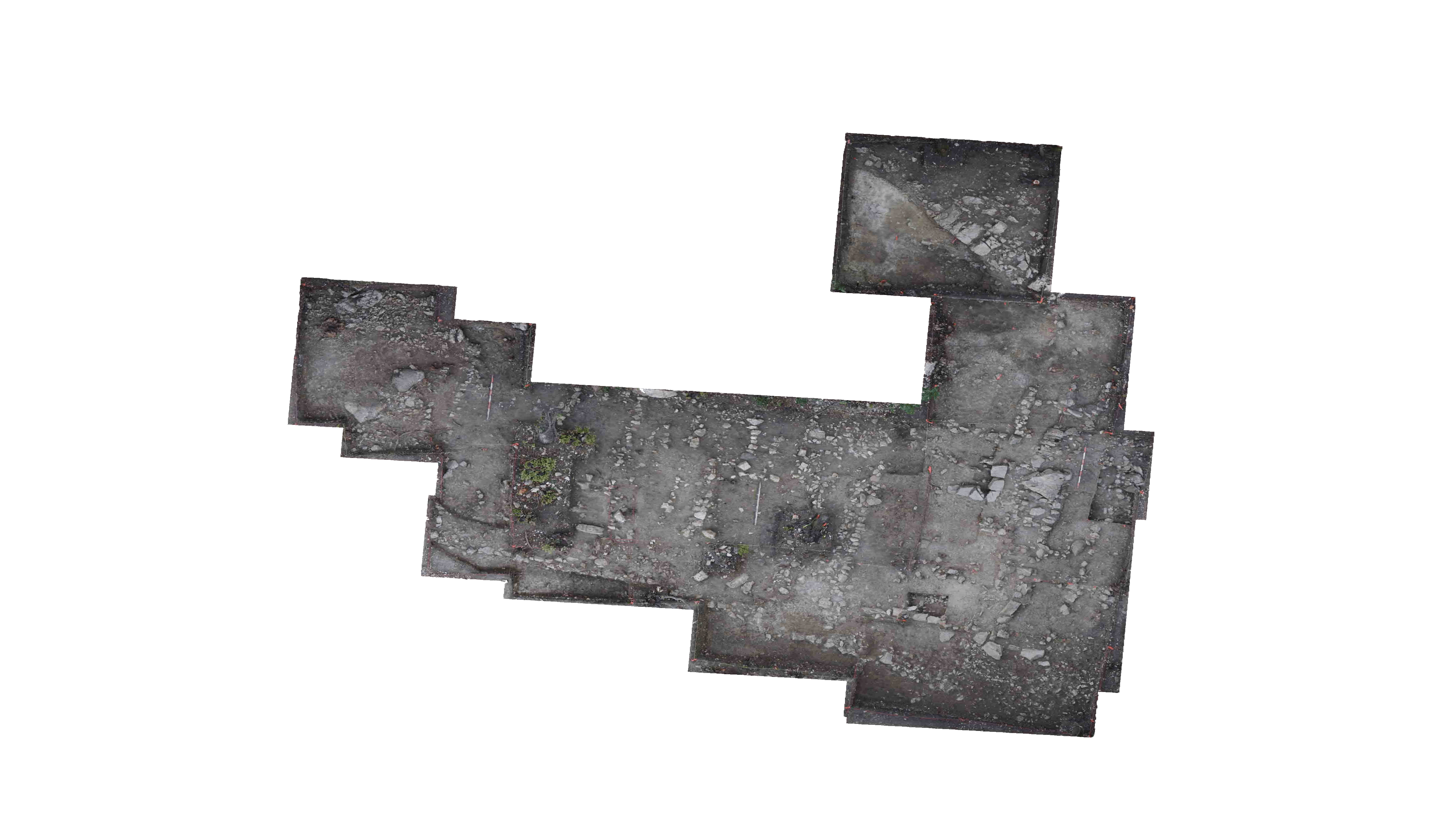Document Content
Introduction
Introduction
In 1991, a master grid system was established for the entire site of Poggio Civitate, and in doing so a baseline was created running east to west through Piano del Tesoro into Civitate A and Civitate B. When brush was cleared to shoot the baseline, several semi-ovular rock formations were revealed in Civitate B. Some of these semi-ovular formations were excavated in order to better understand their nature, as well as their relationship to the architectural features on Poggio Civitate ( ). Based on the size and shape of these rock features and the pottery found inside they appear to be small tombs dateable to the 6 th century BCE.
Additionally, a well was discovered in Civitate A during the 1997 season about thirty meters east of these rock features and also
dated to the 6 th century BCE (see ). The well's presence indicates that Civitate A may have been inhabited during the 6 th century BCE, contemporaneously with the monumental buildings on Piano del Tesoro. Numerous trenches have been opened around the well in Civitate A to look for evidence of non-elite habitation in that area.
Furthermore, all of Civitate B is located at a higher elevation than Civitate A and Piano del Tesoro. Surface finds seen in an initial walk through done in 2010 could not have eroded to their resting location, but rather had to have been deposited by the ancient inhabitants of Poggio Civitate. To that end, in 2010 more trenches were opened in the Northern extent of Civitate B in hopes of locating more semi-ovular rock formations and possibly finding permanent residences
in the area of the well.
Many of the trenches excavated in 2010 were found to be largely sterile- CB36, CB37, CB40, CB41- CB35 sought to uncover the surface evidence of what appeared to be another semi-ovular rock formation, but in excavation it was not found to be the same sort of deposit.
Excavation in CB35 also revealed a rock packing, similar to those found in Civitate A that prompted the opening of several other trenches in the area. While the rock packing proved not to be a deposit, the opening of the new trenches yielded an archaic deposition pit and an organic deposit that were not fully excavated in 2010 (CB39, CB38). These trenches will be reopened in 2011 to explore the full extent of their deposits, in addition the opening of other nearby exploratory trenches.
CB51 will be opened in the Western extent of Civitate B. Neighboring the fellow test trench of CB48, CB51 will be excavated for the following purposes:
1. To investigate the highest point of Civitate B .
2. To explore the area directly west of CB38 and CB39 to determine if the artifacts being found eroded down from any architectural buildings that may have been located on the ridge.
3. To potentially reveal new architectural features, stratigraphy and topographic information.
4. To better understand and explore an area of the site that has little history of excavation.
| Descriptive Attribute | Value(s) |
|---|---|
| Document Type | Trench Book Entry |
| Trench Book Entry Date | 2011-07-23 |
| Entry Year | 2011 |
| Start Page | 3 |
| End Page | 10 |
| Title | Introduction |
| Descriptive Attribute | Value(s) |
|---|---|
| Is Part Of Vocabulary: DCMI Metadata Terms (Dublin Core Terms) | KD I Vocabulary: Murlo |
Suggested Citation
Katherine E. Daley. (2017) "KD I (2011-07-23):3-10; Introduction from Europe/Italy/Poggio Civitate/Civitate B/Civitate B 51/2011, ID:645". In Murlo. Anthony Tuck (Ed). Released: 2017-10-04. Open Context. <https://opencontext.org/documents/2d94951d-f7a1-4c52-8eb0-3d69f8bbc79f> ARK (Archive): https://n2t.net/ark:/28722/k2j67r85d

Copyright License
To the extent to which copyright applies, this content
carries the above license. Follow the link to understand specific permissions
and requirements.
Required Attribution: Citation and reference of URIs (hyperlinks)







